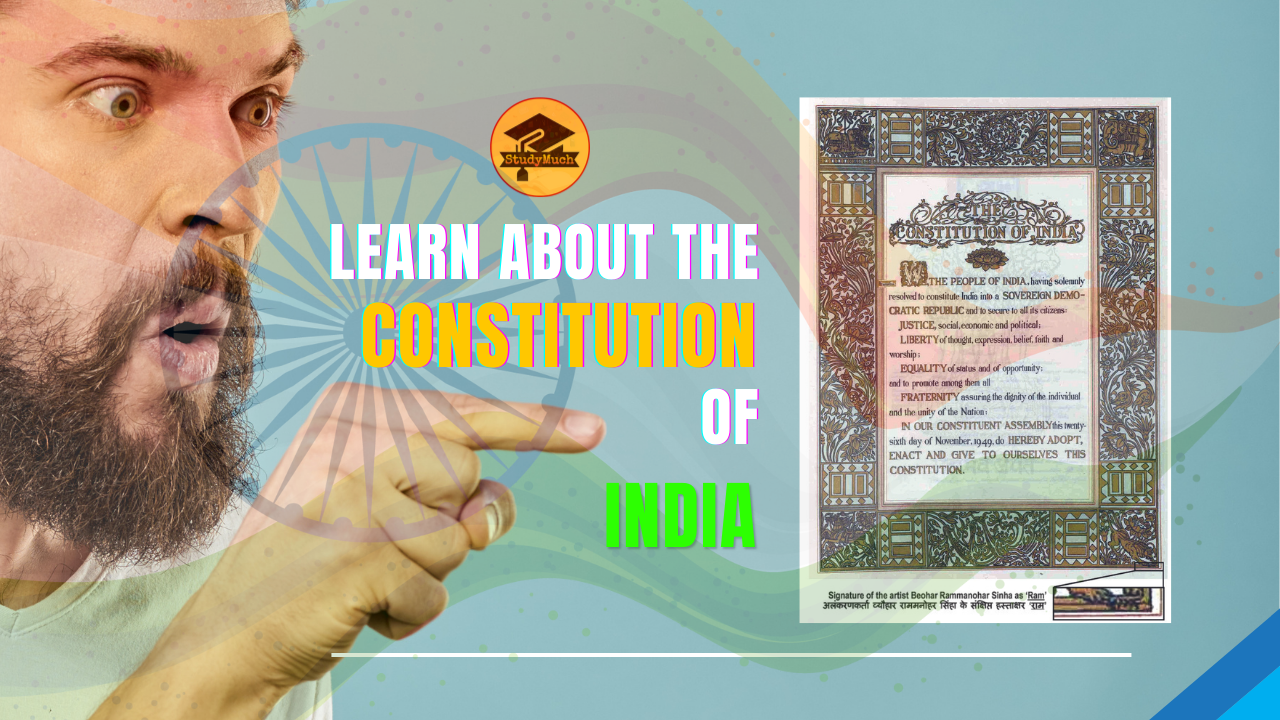Constitution of India

Constitution of India
The Constitution of India is the supreme law of the country and lays down the framework for the government and the fundamental rights and duties of the citizens. It was adopted on 26th November, 1949 and came into effect on 26th January, 1950. The Constitution of India is the longest written constitution of any sovereign country in the world. It contains a preamble, 22 parts, 12 schedules, and over 117,369 words.
The Preamble of the Constitution of India lays down the objectives and aims of the Constitution. It states that the Constitution is established to secure justice, liberty, equality, and fraternity for all citizens. It also declares that the Constitution is intended to create a sovereign, socialist, secular, democratic republic.
Power Divided on Constitution
The Constitution of India divides the powers of the government into three branches: the legislative, the executive, and the judiciary.
The legislative branch is responsible for making laws, the executive branch is responsible for enforcing laws, and the judiciary is responsible for interpreting laws.
The legislative branch is made up of the Parliament of India, which consists of two houses: the Lok Sabha (House of the People) and the Rajya Sabha (Council of States). The Lok Sabha is the lower house and is directly elected by the citizens of India. The Rajya Sabha is the upper house and is indirectly elected by the members of the State Legislative Assemblies.
The executive branch is headed by the President of India, who is the head of state, and the Prime Minister, who is the head of government. The President is elected by an electoral college made up of members of the Lok Sabha, Rajya Sabha, and the Legislative Assemblies of the States. The Prime Minister is appointed by the President and is the leader of the party or coalition that has the majority in the Lok Sabha.
The judiciary is independent of the other two branches and is responsible for interpreting the laws and the Constitution. The highest court in India is the Supreme Court, which is the final court of appeal and has the power of judicial review. The Supreme Court is headed by the Chief Justice of India and consists of 31 judges. Below the Supreme Court are the High Courts, which are the highest courts in each state.

Fundamental Rights
Rights and Duties of the Citizens
The Constitution of India also lays down the fundamental rights and duties of the citizens. These rights include freedom of speech and expression, freedom of religion, equality before the law, protection from discrimination, protection from arrest and detention, and the right to life and liberty.
Principles of State Policy
The Constitution also lays down the Directive Principles of State Policy, which are guidelines for the government to follow in order to create a just and equitable society. These include the promotion of education, the promotion of the welfare of the people, the protection of the environment, and the promotion of international peace and security.
Amendment of the Constitution
The Constitution also lays down the provisions for the amendment of the Constitution. The Constitution can be amended by a two-thirds majority in each house of the Parliament, and also by the majority of the State Legislative Assemblies.
New States boundaries of existing States
The Constitution of India also lays down the provisions for the formation of new states and the alteration of the boundaries of existing states. The Parliament can by law form a new state or alter the boundaries of any state, but such a law can only be passed with the consent of the affected state.

In conclusion, the Constitution of India is the supreme law of the land and lays down the framework for the government and the fundamental rights and duties of the citizens. It is a comprehensive document that provides for the functioning of the government and the protection of the rights of the citizens. It is the longest written constitution of any sovereign country in the world and contains a preamble, 22 parts, 12 schedules, and over 117,369 words.
Read Also –


2 Comments
Blackey · March 8, 2023 at 1:19 pm
Oh my goodness! a tremendous article dude. Thank you Nonetheless I am experiencing problem with ur rss . Don?t know why Unable to subscribe to it. Is there anybody getting similar rss downside? Anybody who knows kindly respond. Thnkx
is gate io safe · June 12, 2023 at 11:18 am
Reading your article helped me a lot and I agree with you. But I still have some doubts, can you clarify for me? I’ll keep an eye out for your answers.